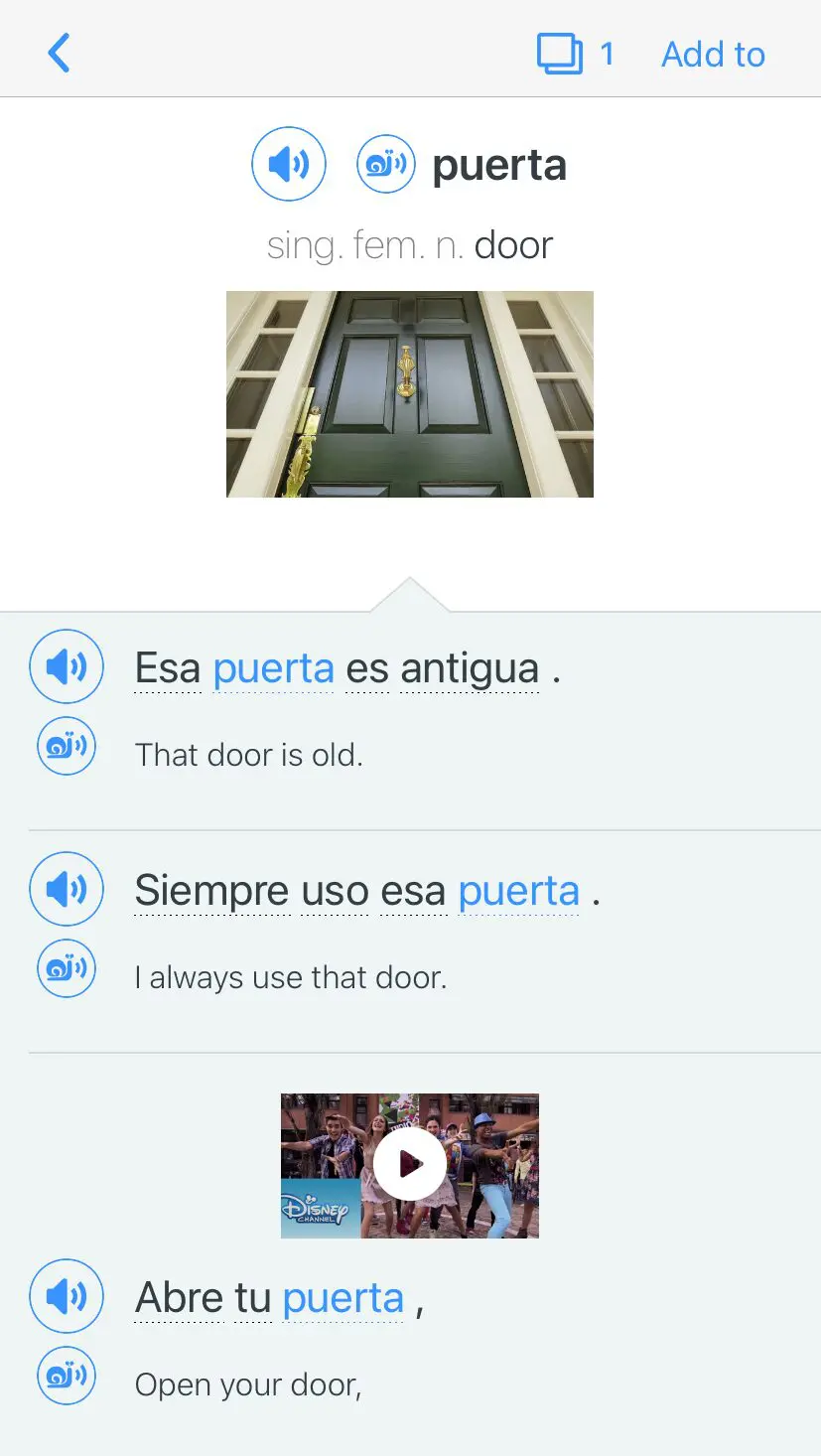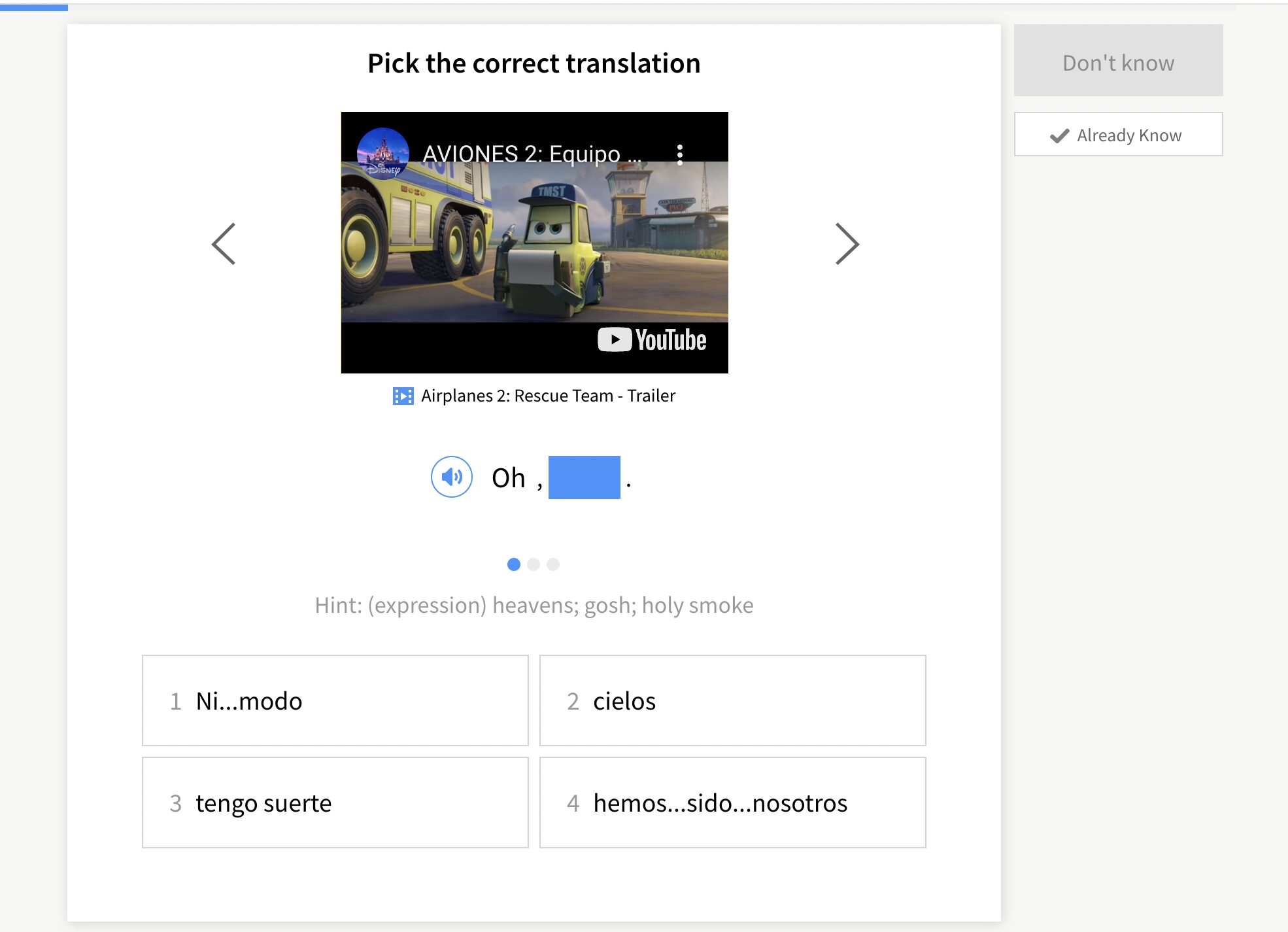Contents
- What are Prefixes?
- Useful Spanish Prefixes to Know
- 1. Mal- (bad)
- 2. Ben- (good)
- 3. Des- (un-)
- 4. Dis- (not)
- 5. Pre- (before)
- 6. Con- (with, together)
- 7. Com- (with, together)
- 8. Co- (with, together)
- 9. Ex- (out of)
- 10. Inter- (inside, among, between)
- 11. Re- (again)
- 12. Sobre- (over)
- 13. Sub- (under)
- 14. Contra- (against)
- 15. Uni- (one, whole)
- 16. Equi- (equal)
- 17. Trans- (across, beyond)
- 18. Poli- (many, much)
- 19. Bi- (two, double)
- 20. Super- (above, beyond)
- Why Focus on Prefixes in Spanish?
- And One More Thing…
20 Prefixes in Spanish That’ll Help You Understand Hundreds of Words

Learning and memorizing Spanish verb conjugations can be a drag. On the other hand, without knowing the correct conjugations—and especially those tricky irregular verbs—communicating in Spanish is basically impossible.
Luckily, there’s a little trick that increases your vocabulary knowledge while cutting your memorization time in half: prefixes. Read on to familiarize yourself with 20 of the most common Spanish prefixes.
Download: This blog post is available as a convenient and portable PDF that you can take anywhere. Click here to get a copy. (Download)
What are Prefixes?
Prefixes are groups of letters added to the beginning of a word to alter, change or qualify its meaning. They provide context or indicate a specific characteristic of the base word or root.
For example (in English) the prefix in the word “unhappy,” “un-” indicates negation, making the word mean “not happy.”
Common prefixes in Spanish include dis– (not), pre– (before) and con– (with). They are essential in forming new words from existing words.
Useful Spanish Prefixes to Know
1. Mal- (bad)
You can put the prefix mal at the beginning of various verbs in order to express that the action is being done poorly, or even that the action itself is morally bad. For example, the word malgastar (to waste) comes from mal (bad) and gastar (spend). To spend something badly is to waste.
Examples:
- Malpensar — to think badly of
- Maldecir — to curse, to speak badly of
- Maltratar — to mistreat
- Malentender — to misunderstand
2. Ben- (good)
Meaning: good
The opposite of mal is ben. This one’s not hard to remember because it looks and sounds so similar to the Spanish words bien (well) and bueno (good), two basic Spanish words!
Examples:
- Bendecir — to bless, to speak well of
- Beneficiar — to benefit
3. Des- (un-)
Meaning: un-
Like the English prefix un-, des implies the action of undoing something, either in a literal or a metaphorical sense. Take, for example, the verb descubrir (to discover). Like in English, it comes from the prefix des plus the verb cubrir (to cover), expressing a metaphorical uncovering of something.
Watch out—the word “uncover,” referring to the literal act of uncovering something, has a different Spanish translation: destapar.
Examples:
- Deshacer — to undo
- Desplegar — to unfold
- Descuidar — to neglect
- Desanimar — to discourage
- Descomponer — to decompose
- Desaparecer — to disappear
4. Dis- (not)
Meaning: not
Similar to des in sound but not equal in meaning, the pronoun dis helps to express opposites or the concept of not doing something.
Examples:
- Discontinuar — to discontinue
- Disculpar — to forgive
- Disociar — to dissociate
- Dislocar — to distort
5. Pre- (before)
Meaning: before
Like the word prefijo (prefix), this particular prefix refers to things that come before. It’s quite similar to its English equivalent prefix “pre,” as seen in words like “prepare” or “prevent.”
As in English, we can understand the “before” temporally or spatially. For example, the Spanish word presentar (present), can be understood as “to put something before someone else” figuratively.
Examples:
- Predecir — to predict
- Presuponer — to presume
- Preparar — to prepare
6. Con- (with, together)
Meaning: with, together
The Spanish word con by itself means “with,” so it shouldn’t be surprising that the prefix con is used for verbs that have something to do with putting things together or things working together. However, make sure you don’t mix it up with verbs that actually start with the prefix contra, which means “against”—almost the exact opposite!
Examples:
- Convivir — to live together
- Contratar — to contract/to hire
- Convenir — to be convenient
- Contener — to contain
7. Com- (with, together)
Meaning: with, together
Similar to con, com is also used to talk about things going together or working together.
Examples:
8. Co- (with, together)
Meaning: with, together
This third and final prefix used to mean “with” or “together” is also represented in a number of useful Spanish verbs, many of which are cognates with their English equivalents.
Examples:
9. Ex- (out of)
Meaning: out of
Ex is another prefix that’s quite similar to its English equivalent. Think of words like extract and expose. If you see the prefix ex at the beginning of a word, you can guess that the verb in question has something to do with pulling something out of something else or removing something.
Examples:
10. Inter- (inside, among, between)
Meaning: inside, among, between
If you’re learning a second language, perhaps you’re already interested in being an international citizen. Verbs that begin with this prefix have to do with actions that involve placing oneself inside, among or between other things.
Examples:
- Intervenir — to intervene
- Interactuar — to interact
- Interpretar — to interpret
- Interponer — to interject
11. Re- (again)
Meaning: again
If you’ve ever studied the renacimiento (Renaissance) or the Spanish reconquista (re-conquest), then you’re already familiar with this prefix, which means “again.”
Examples:
- Renacer — to be born again
- Repasar — to review
- Reunir — to meet, to reunite
- Reforzar — to reinforce
- Reiterar — to reiterate
- Rehacer — to redo
- Reiniciar — to restart
12. Sobre- (over)
Meaning: over
The word sobre has many different meanings in Spanish—depending on context, it can mean “approximately,” “around” or “envelope.” But as a preposition, it frequently means “over” or “above,” and that’s also what it means as a prefix.
Examples:
- Sobrepasar — to overpass
- Sobresalir — to stand out
- Sobrevivir — to survive
- Sobrecargar — to overload
- Sobrecogerse — to overwhelm
13. Sub- (under)
Meaning: under
Sub is the opposite of sobre. Just like the English prefix sub, the Spanish equivalent deals with things that are under. See Spanish words like subterráneo (underground) and subtítulos (subtitles).
Examples:
- Subrayar — to underline
- Subestimar — to underestimate
- Subtitular — to subtitle
- Subyacer — to underlie/to be hidden under
14. Contra- (against)
Meaning: against
In Spanish, En contra means “against” or “in disagreement” so it’s not shocking that contra as a prefix means “against.” Its English equivalents are generally “contra” or “counter.”
Examples:
- Contradecir — to contradict
- Contrarrestar — to counteract, to resist
- Contraatacar — to counterattack
- Contraponer — to counter, to be against
15. Uni- (one, whole)
Just like in English, the Spanish prefix uni means “one” or “whole.” (Think: universe, unilateral, united…)
Examples:
- Unir — to unite, to come together
- Unificar — to join, to unify
- Uniformar — to standardize, to make uniform
16. Equi- (equal)
Meaning: equal
Think of English words like equivalent, equidistant and even equal, and you won’t forget the meaning of the Spanish prefix equi. Use it in verbs that deal with making things equal or similar.
Examples:
- Equivaler — to be equal to
- Equiparar — to equate, to consider equal
- Equilibrar — to balance
- Equilibrarse — to be in balance
17. Trans- (across, beyond)
In Spanish, trans- often indicates movement or change from one state to another.
For example, transmitir means to transmit, transformar means to transform and transporte refers to transportation. The prefix trans- is used to convey the idea of crossing or going beyond a particular state or location. It is commonly used in words related to transportation, communication and change.
Examples:
- Transmitir — To transmit
- Transformar — To transform
- Transporte — Transportation
- Transcribir — To transcribe
- Transoceánico — Transoceanic
- Transgénico — Transgenic
18. Poli- (many, much)
The Spanish prefix “poli” comes from the Greek word “polys,” which means “many” or “much.”
In Spanish, it often conveys the idea of having many or much of something.
For example, polifacético means versatile or multifaceted and política relates to politics (the affairs of the state or community). The prefix poli- is used to indicate abundance, variety or complexity.
Examples:
- Polifacético — Versatile
- Política — Politics
- Policía — Police
- Polisemia — Polysemy, having multiple meanings
- Polirrubro — Multi-category store
19. Bi- (two, double)
The Spanish prefix “bi” is derived from the Latin word “bi,” which means “two” or “double.”
In Spanish, it often indicates a duality or having two of something. For example, bilingüe means bilingual and bipolar refers to bipolar disorder. Bi- is used to denote a dual or twofold nature of things.
Examples:
20. Super- (above, beyond)
In Spanish, super- often conveys the idea of being above or beyond something in terms of quality, quantity or degree.
For example, superior means superior or higher and supernatural refers to the supernatural (beyond the laws of nature). Super- is used to indicate a higher level or degree of something.
Examples:
- Superhéroe — Superhero
- Superponer — To superimpose
- Supernatural — Supernatural
- Supersónico — Supersonic
- Superstición — Superstition
Why Focus on Prefixes in Spanish?
There’s a reason why your grade school language arts teacher spent so much time making sure you understood prefixes. They’re incredibly useful! Prefixes can be great for helping you figure out the meanings of unfamiliar words, both in English and in Spanish.
Take, for example, a Spanish word like componer (to put together, to compose). You might not know what this word means at first glance. But if you know the common verb poner (to put), and you also know that the prefix com means “with” or “together,” it won’t be hard to figure out that componer has to do with putting things together.
This article focused on verbs because prefixes are especially useful when it comes to verbs. One of the most difficult things about Spanish for a non-native speaker is trying to keep all of those different verb conjugations straight.
Learning the Spanish prefixes will help you a million times over when reading and listening to Spanish.
This list of prefixes is just the tip of the iceberg. But since these are some of the more common prefixes in Spanish, they make a great starting point.
To review what you’ve learned here (or dive deeper into the topic), consume Spanish-language content wherever you can find it—such as books, subtitled movies and TV shows—and take notes when you see prefixes. A program like FluentU can help you with this.
FluentU takes authentic videos—like music videos, movie trailers, news and inspiring talks—and turns them into personalized language learning lessons.
You can try FluentU for free for 2 weeks. Check out the website or download the iOS app or Android app.
P.S. Click here to take advantage of our current sale! (Expires at the end of this month)

Remember that although this article focused on verbs, these prefixes are equally valuable for modifying nouns, adjectives and adverbs! Prefixes are a great quick and easy way to enrich your Spanish vocabulary.
Download: This blog post is available as a convenient and portable PDF that you can take anywhere. Click here to get a copy. (Download)
And One More Thing…
If you’re like me and prefer learning Spanish on your own time, from the comfort of your smart device, I’ve got something you’ll love.
With FluentU’s Chrome Extension, you can turn any YouTube or Netflix video with subtitles into an interactive language lesson. That means you can learn from real-world content, just as native speakers actually use it.
You can even import your favorite YouTube videos into your FluentU account. If you’re not sure where to start, check out our curated library of videos that are handpicked for beginners and intermediate learners, as you can see here:
FluentU brings native Spanish videos within reach. With interactive captions, you can tap on any word to see an image, definition, pronunciation, and useful examples.
You can even see other videos where the word is used in a different context. For example, if I tap on the word "puerta," this is what pops up:
Want to make sure you really remember what you've learned? We’ve got you covered. Practice and reinforce the vocab from each video with learn mode. Swipe to see more examples of the word you’re learning, and play mini-games with our dynamic flashcards.
The best part? FluentU tracks everything you’re learning and uses that to create a personalized experience just for you. You’ll get extra practice with tricky words and even be reminded when it’s time to review—so nothing slips through the cracks.
Start using the FluentU website on your computer or tablet or, better yet, download our app from the App Store or Google Play.
Click here to take advantage of our current sale! (Expires at the end of this month.)











